Collaboration Journal
Special Feature
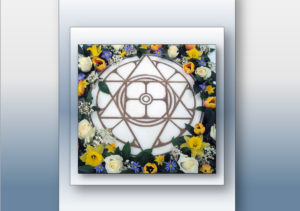
Decade of Illuminations
WAYNE BLOOMQUIST
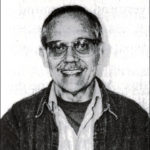
Travel back to the 1970s with this “A Barfight for the Earth” protagonist (see p. 30 in the journal) and longtime practitioner of Integral Yoga as he shares his memories of Haridas Chaudhuri and Nolini Kanta Gupta, spiritual experiences in Auroville and Pondicherry, and even the founding of Auromere, with Collaboration editor Bahman Shirazi. Here are some condensed excerpts from their conversation.—Editors
COLLABORATION: Growing up, did you have any experience with spirituality or religion, or another context in which your future engagements with Integral Yoga might be understood?
WAYNE BLOOMQUIST: Well, there really wasn’t anything in my early life. I was brought up as a Presbyterian, and that kind of left me cold. There wasn’t much there, so I went from one thing to another. For example, I used to try to hypnotize myself, working on the different parts of the body, and I think once when I was traveling for business one of the attempts was successful and I experienced, not a trance, but something similar. That was a start. When I was in the Army up in Alaska, I was just taking stuff out of the magazines. For example, I wrote and asked for some information about the Rosicrucians, and that didn’t go too far. So I was dabbling here and there. Eventually, I got into meditation, and I liked that a lot.

C: So this mediation phase was roughly when? In the early 60s?
WB: Well, I was in my 20s, so it would have been in the 50s. Things were just starting to develop in the U.S. I forget the sequence now of what happened, but I used to do some automatic writing. I sat there with a piece of paper and a pen and waited for it to move [laughs]. I started writing and one thing led to another, and I did quite a bit of spontaneous writing that got things moving.
C: When did you come to the Bay Area?
WB: Let’s see. I still had a couple of years of college left, so I went into the Army. I was in Arkansas, and then they shipped me to Alaska. In Alaska I was writing away for anything, any kind of religion, like the Rosicrucians. So I was getting a lot of mail from various sources like magazines. Anyway, I got out of the Army and finished my undergraduate education at San Jose State College [now University] in business. So I was in the Bay Area at that time.
C: I suppose when you were around San Francisco, you somehow found out about the Cultural Integration Fellowship?
WB: Eventually, yes. I read about the Fellowship and Dr. Chaudhuri in San Francisco. That interested me, so I started going over to his Sunday lectures, taking night classes with him at the California Institute of Asian Studies. I liked what I heard, and he was a great teacher and speaker. I remember taking Sanskrit at the school there. I kept going, and eventually I got a [Ph.D.] degree in the mid-1970s.
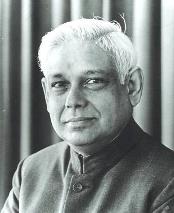
WB: I was working on dreams a lot at this time. I would wake up at night and write my dreams down. They started coming quite a bit, like three or four a night, which would interrupt my sleep of course. That’s how I got started. And the more I heard Dr. Chaudhuri, the more I got interested in Sri Aurobindo and the Yoga. Before that I wasn’t getting any dreams, and then I got a lot of dreams that I was concentrated on. So it was kind of a self-discovery process, and then I got into the Yoga with Dr. Chaudhuri. The next thing I knew I was going to India. That was my goal, so I started saving up some money.
C: What was it like for you, going to Pondicherry?
WB: Well, I guess it changed my life. When I got there it was all Greek to me, going to the Samadhi and watching people, and then Jacqui, my wife (we weren’t married at the time) also went with me. I invited her along, as well as my adopted daughter Cathi—so the three of us went. Jacqui was very disappointed at first. She said, “This isn’t what I expected at all.” But once she got there, she saw Nolini Kanta Gupta for the first time. I had given her a little booklet about him, so she knew about him. When she saw him she immediately went to his feet. It was spontaneous on her part. She would see him around the Samadhi and developed a relationship with him, and when she got back she wrote him letters. Once she wrote,“I feel there is something you can give me.” He gave her the name Surama, which means “most pleasing person,” and that was their connection. She would write him and ask him for advice often, and he would guide her.
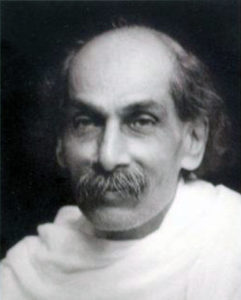
C: So the name Surama was given by Nolini Kanta Gupta?
WB: Yeah. This brings back a lot of feelings. We had that connection, and I remember being with her and going to Nolini’s room, and he would come shuffling out—he was quite old at the time. So we had our first trip to Pondicherry just after the Mother had passed away. By the time we got there the Ashram was very peaceful. People had accepted it in a way, and all the turmoil had subsided or was passing. I think we were gone for six months.
C: Oh, that’s great!
WB: Auroville was still pretty raw. It was pretty rough out there. There wasn’t a lot of development—it was just starting. So we were kind of in that group. And when we got back we decided to do some importing from Auroville, and set up a shop in Berkeley. This was a big experiment for us. We rented a place in Berkeley and were selling clothing and some goods from Auroville. We were barely making it, just being able to pay the expenses by selling the merchandise. We went back about every couple of years.
C: Was Dr. Chaudhuri still alive when you went to India for the first time? He died in 1975.
WB: Oh yeah! He was alive. I remember I had just come back and was at the Fellowship. He saw me standing there and his face lit up and he said, “Aha” [Laughs]. He saw something. I remember that very distinctly.
C: During this time, were you reading about the Yoga and absorbing some of the energies firsthand when you traveled there? Would you say at that time you were already committed to the Yoga? Was that the real force behind it all?
WB: Oh yeah. I think on the first trip, if I remember it right, I was trying this and that and I wasn’t getting too far and I finally let go of everything and just surrendered, and that’s when I started making progress—that was the key for me.
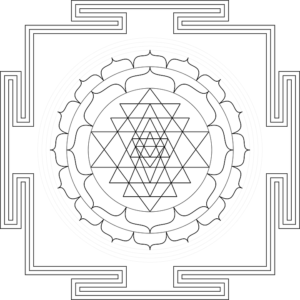
C: Did you feel that behind Integral Yoga there was something that you already had in you in some way, and it was being articulated for you and you resonated with it, or was that something new to you?
WB: Yeah, I thought that I had done something like this before. I think I wrote about it in my book. I felt a descent or something that came into me in Pondicherry. It was an illumination and it changed me. In fact, it was a pivotal point for me. This is hard for me to reconstruct. All this was going on at the time of being in San Francisco and part of the Fellowship.
C: So here we are in the 70s and you were already introduced to Integral Yoga for a few years, and your dissertation is done. How would you describe the decade of the 70s in terms of your connection with the Yoga?
WB: It started in the 70s. We started importing from Auroville—Auromere Creations—and selling merchandise. Surama was running the shop. I would still go back to Pondicherry every couple of years. Surama went with me the first few times, and then I started going by myself.
C: These trips must have been important. Can you think of any unusual experiences?
WB: Somehow I established a connection with somebody from a past life. I was reading Sri Ramakrishna’s work, and I felt that I knew somebody in that story. There was a photograph in one of his books about his mahasamadhi, when he passed, and they had people in the photograph with names below it, so you could identify some of them, and I picked out one of them that I kind of resonated with. His name was Nityagopal, so I started reading about him. He was one of Ramakrishna’s favorites, but he was kind of an innocent young boy.
C: Did you feel that you knew this person or perhaps that might have been you in a past life?
WB: I thought so, and had three meetings in the spirit world with him. I know that in one of them he came toward me and embraced me and I told Surama about it at the time. She was pretty psychic herself, and she said that a holy man came to me that was Nityagopal. She could see him and she could describe him to me. So there was that connection that was made with Ramakrishna and Nityagopal. He came to me once in Berkeley, and once in the Ashram, and there was a third time somewhere, and no more since then.
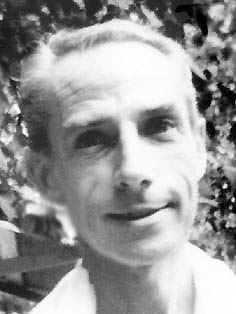
C: You mentioned something about Satprem before; that you were at the Fellowship once and he appeared in your consciousness. Do you recall that?
WB: I was at the Ashram in San Francisco and I was sitting there meditating by myself and I felt this energy beside me that was kind of swirly and intense, and I heard the name Satprem. I think he was announcing that he was there. I was just sitting there and experienced this swirling of energy next to me, and then I heard the name Satprem in my head. I didn’t know where it came from at the time. but I figured out that he put it there.

